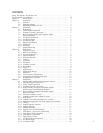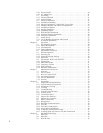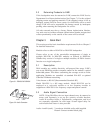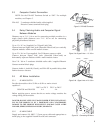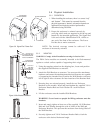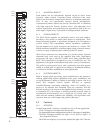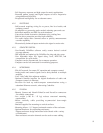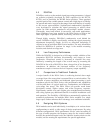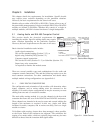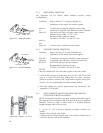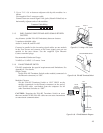
4.1.2 ACOUSTICAL BENEFITS
Each module can be electronically adjusted on-site to direct sound
primarily where needed. Unwanted sound reflections from room
surfaces can be reduced, improving the direct to reverberant sound ratio.
This, in turn, can significantly increase speech intelligibility.
Asymmetrical pattern control can provide consistent SPL in situations
with high near-to-far listener distance ratios. User-adjustable level
control, equalization, and compression are provided on each of the two
audio inputs. Signal delay is provided for multiple module locations.
4.1.3 PHYSICAL BENEFITS
The DSAi Series modules are physically narrow and quite shallow,
providing a low profile to reduce their impact on architecture. Their
normal mounting position is specifically designed to be flat against a
vertical surface. This considerably reduces installation complexity.
Several modules to be easily arrayed in one location as a cluster. This
affords additional capabilities including higher output, extremely narrow
vertical coverage, extended pattern control, greater LF output.
DSAi Series enclosures are constructed of a powder-coated, extruded
aluminum body (also used as the amplifier heat sink), high-impact
polystyrene end caps, a thick PVC baffle, and a finely perforated steel
grille. This construction is designed for years of trouble-free use. The
appearance is designed to blend attractively with a variety of architecture.
The grille is powder-coated steel, with a perforation style that appears
similar to a cloth grille at typical in-use distances. Installation hardware
is included to facilitate installation in most applications.
4.1.4 ELECTRICAL BENEFITS
Built in digital signal processing, power amplification, and protective
limiting significantly reduces equipment costs, space, installation, and
set-up adjustments. Cabling is limited to providing ac mains, line level
audio, and computer control signals. EIA-485 or optional
CobraNet/Ethernet networking technology allows all modules in a
project to be adjusted and controlled from one computer. EIA-485
network topology was chosen as the supplied default because it is easy
to implement. It is also unique in allowing multiple network nodes to
communicate bi-directionally over a single pair of twisted wires. No
other network standard combines this capability with equivalent noise
rejection, data rate, cable length, and general robustness.
4.2 Features
4.2.1 ACOUSTICAL
Vertical beamwidth is software controlled on-site to fit the application
· Wide 120 degree fixed horizontal beamwidth.
· Pre-determined cluster configurations provide a wide range of capabilities.
· DSA250i full-range module has eight 4 in LF drivers, eight 1 in
horn-loaded HF drivers.
· DSA230i low frequency or voice-only module has eight 4 in LF drivers.
8
AMP
DSP
AMP
DSP
AMP
DSP
AMP
DSP
AMP
DSP
AMP
DSP
AMP
DSP
AMP
DSP
AMP
DSP
AMP
DSP
AMP
DSP
AMP
DSP
AMP
DSP
AMP
DSP
AMP
DSP
AMP
DSP
INPUT DSP
INPUT DSP
EIA-485
AUDIO A
AUDIO B
DSA250i
INPUT DSP
INPUT DSP
AMP
DSP
AMP
DSP
AMP
DSP
AMP
DSP
AMP
DSP
AMP
DSP
AMP
DSP
AMP
DSP
EIA-485
AUDIO A
AUDIO B
DSA230i
Figure 4.1.4 DSAi Block Diagrams




